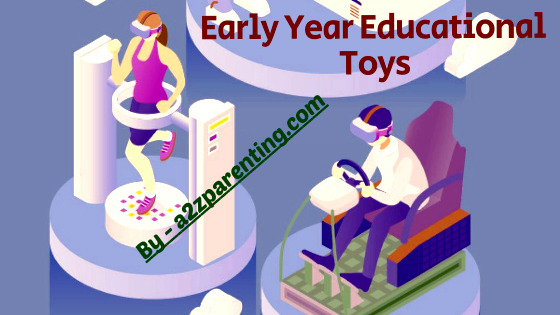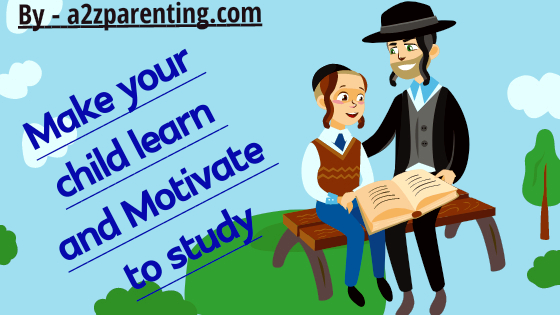Tag: How to motivate a child to go to school and online learning
Early Years educational toys

Guidance on early years educational toys
During child growth and development every child has right to physical, emotional and mental progression. Initial activities are as mainly parents play games and educating through rhymes is a supportive start. Furthermore entertainment, sports, education and cultural activities helps in developing along with personality as best of it’s abilities.
Educational toys (also called “instructional toys”) are play objects, usually designed for children, that are expected to encourage learning. They are often intended to fulfill an ‘educational’ purpose such as helping a child develop in a particular skill or teaching a child about a particular subject. They often simplify, shorten or model the activities and objects used by adults. Although children are constantly interacting with and learning from the world, many of the objects they interact with and learn from are not toys.
Toys are generally considered to be made specifically for the use of children. A child can play and learn with a rock or stick, but it would not be considered an educational toy as.
- It is a natural object, not a designed object.
- It has no expected educational purpose.
The difference lies in the perception or reality of the intention and value of the toy. An educational toy is expected to educate. It is expected to instruct, promote intellectuality, emotional or physical development. An educational toy should teach the child about a particular subject or help the child develop a particular skill. More toys today than ever before are designed with a child’s education and development in mind.
Intelligent toys.
According to the current market review’s – An artificial intelligence along with robotic technology become more adorable, due to which it has been incorporated into a wider range of children’s toys. Not only because it provide new interactive experiences, it also extend the life of more traditional toys with online features.
The Sphero Robot ball is a good example. It’s a ball that can power itself around a room with gyroscopes and motors. It can be played interactively or operated from the respective smartphone app. By delivering and responding to motion it provides a range of educational experiences, from learning colors and math to developing a basic understanding of programming. This is the “Big Track” of the modern era – for those who remember the program dump trucks from years ago.
For children, technology is a natural part of everyday life. The boundaries between what is connected to the Internet and what is a traditional toy or gadget are ever more blurred. Understanding the benefits, costs and data implications of connected toys and wearable gadgets is an important aspect of parenting. While children often quickly understand how these things work, they need guidance on how to use them in a safe and healthy way.
Early Childhood Educational development toys is not only the first step in the ladder of education, but it is also an important foundation for primary education. Now as a stage of education at the global level, Child is being considered to be extended till the age of 8 years, because from the point of view of child development it has been seen that children in the age group of 6 to 8 years are similar to their younger children in their needs and traits. And they require similar educational methods.
While specifying about Early years educational toys, It clarification as – Education is envisioned as an integrated, holistic program for children that includes provision for education, care, health and nutrition.
Three sub-stages have been identified within the period of –
- The early motivational stage for children aged three years or less (who require a home-based stimulating environment and care),
- Children between the ages of 3 to 8 years (who need a center-based early childhood with a holistic approach) education program is required) for the early childhood education stage.
- The early primary education stage for children between the ages of 6 and 8 years.
Early childhood education main objectives –
First is all round development of children through appropriate program of play based activities, interactions and experiences (which will provide a solid foundation for lifelong learning and development) from the point of view of age development. to promote,
Secondly such special. School-readiness in children through a variety of concepts and skill-based activities
which will promote preparatory work to learn reading, writing and arithmetic before entering primary schooling to develop. This is not a program to formally teach these three basic skills. School-ready objectives are particularly suited to children between the ages of four and six, as by this age children are maturely ready for a more structured, play-based, learning environment.
Why children learn better with educational toys?
Anything by age that challenges gross motor, motor skills, building skills, basic foundation skills like sorting, numbering, classification is great. These basic building blocks help a child as they grow.
The imagination he has can be heard from the stories he has composed. How many new things the world would see if toys could help develop that imagination. Toys are a major source of channelizing energy that children have.
Things that children learn through toys include cause and effect, finger strength, dexterity, socialization, sharing, problem solving. Toys hone their imagination and help them identify great role models. Toys help children recognize and enforce healthy inter-personal relationships. Negotiation and conflict resolution are also some of the things that toys teach
Importance of educational toys during child development?
They’re designed to dress up a subset of information with bells and whistles so the child will stay focused on it. That prioritizes the educator’s idea of what’s important over the child’s developing stage. Educational toys are designed often to lay out a clear path to lead a child to draw the “right” conclusion. They aren’t set up to let the child explore what sparks their curiosity then take it in the direction that is most fascinating.
It’s important that children have lots of time to play freely. Play is how they figure out the world.
Some educational toys can be enjoyable. But don’t depend on “educational” than “noneducational.” A child may get more out of pulling a toaster apart, exchanging heads on their dolls, playing a for-fun video game, digging in the dirt than from a toy designed to be educational.
Your child to learn and motivate to study
Make Your child to learn and motivate to study
The core motivation is control and choice, and many of the problematic aspects of parenting, which are commonly associated with the struggle surrounded this need. On the top of this, because of their stage of development and relatively little life experience, which make child often feel out of control. Nearly all aspects of an adolescent’s behavior are linked to their wish to achieve, belong and to have some control as well as choices.
Although all three are interlinked, we will initially focused on achievement, and this will illustrated with others. The case study to illustrate specific problems relating to achievement and follow till end results. In such parameter the involvement of best, featured and successful parenting is required.
Parents also wants to have a sense of achievements and their own agenda may include aspects of their work as –
- Past
- Current &
- Future
Aspects of an economic nature; material possessions such as their belongings etc. Which may sometime result in conflicts priorities within the family.
While a special focus on – Your child to learn and motivate to study few situation come across are as – Many children do not mind studying and they keep thinking of avoiding studies by making some excuse. This directly affects their studies.
In such a situation, the concern of the parents increases. If you also feel that your child makes excuses to avoid studies and does not mind his studies at all, then today we are going to give you some such parenting tips, which may help you in this work.
How do you motivate an unmotivated child?
We need to focalize on best Motivation for child towards studies and carrier
Nowadays, children do not even read due to pressure. So in such a way, if you treating with love, and also adding few tips and tricks to make your child feel loved and valued, then they may study for some more time. After studying for few hours they feel bored, then in such situation, I suggest some tips which can be effective, So let’s know what those tips can be: –
If we show that child the dream of his future and tell how he can get what he wants by doing some studies and efforts, then he is excited to study himself.
As You give them examples of a person who has become very great in the world with good education, but do not compare them to the child of a relative. Praise him: Whenever he does something good, then praise him how he can get closer to his dreams by doing the same.
Stop interrupting: Close the children tokens repeatedly for studies, give them full opportunity to entertain and develop an easy and playful environment, because the work for which the human being is forbidden attracts more of the same. Try to understand: See why they are not reading, there is no problem in understanding them. I hope that this information will prove beneficial for you.
Discover your child’s strengths and encourage their interests
Building the ambition national practice guidance on early stage
Sit together, company them – The best way to get your child to study is to sit with him while he study. At this time instead of occupying in a phone or laptop, you help him in his studies and get involve by asking for revision of all prepared syllabus.
Schedule a techniques or methods which are well disciplined and study schedule as subject wise break-up according to time-table. If you want your child to study at the right time and also get time to play, then prepare a study schedule for him. In this, not only get homework done, but also talk about the things taught and studied in the class
Listen to the kids too – It is very important to listen and give importance to your child’s words and thoughts. This will bring confidence in him. You should also teach him the tricks to justify his point. Parents need to required behavior management strategies for best handling.
Do not get angry at failure – It is wrong to put the burden of failing in studies on the child. If your child comes in low numbers, do not scold him nor embarrass him in front of his friends or anyone else. Motivate the child to try again and perform better.
Don’t be tempted – The most positive way to motivate children to read is to praise them. However, you should not give them any kinship or greed. If you make him sit to study with any greed, then he will simply starts looking in books or may just read it at that time, without any interest and may not focus as well as 0% percent involvement in studies.


Recent Comment